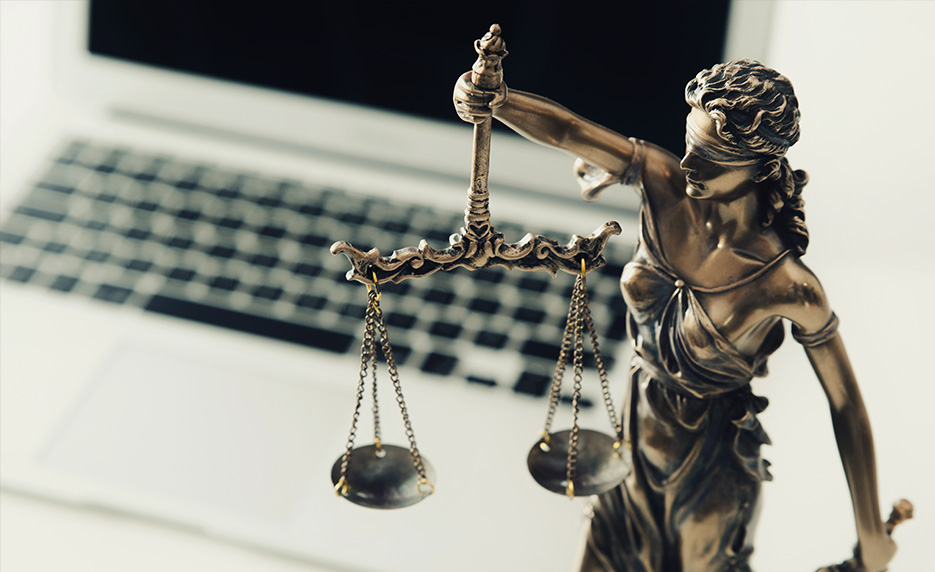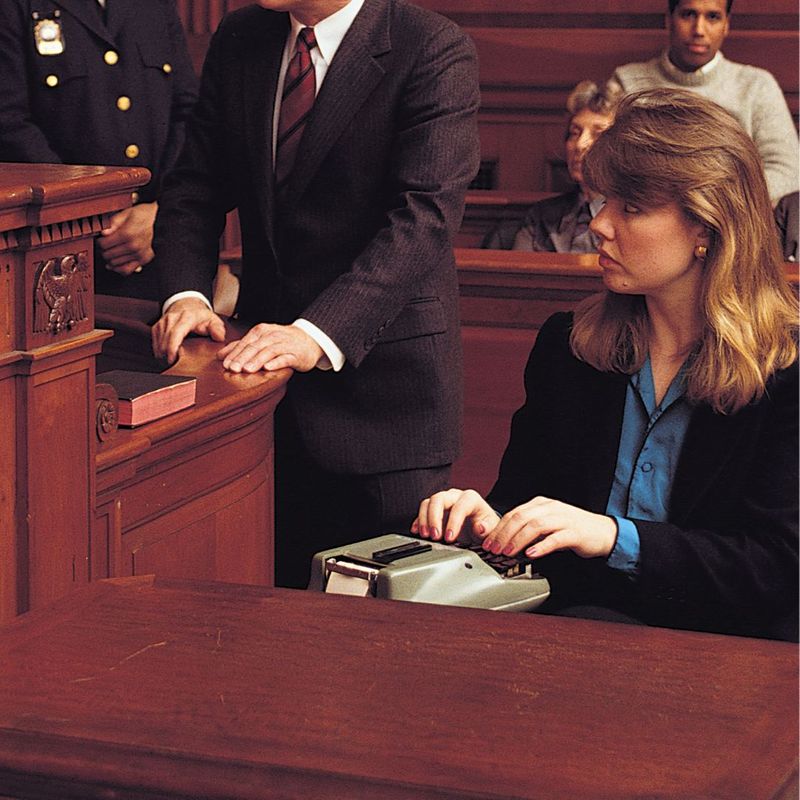Durham court reporting and real-time transcription: how it works
Exactly How Court Reporting Functions: A Step-by-Step Guide to the Legal Process
Court reporting is a crucial part of the lawful system. It involves an organized procedure that ensures accurate documentation of proceedings. From prep work to the final delivery of records, each step is important. Understanding just how stenotype reporter run offers understanding into the honesty of lawful records. The subtleties of their work can greatly affect legal end results, triggering questions concerning the innovations and techniques they utilize. What are the specific techniques that define this profession?
The Function of Court Reporters in the Legal System
Stenotype reporter play a crucial function in the lawful system by offering dependable and exact records of court procedures. Their job guarantees that every talked word during depositions, hearings, and trials is recorded, which is vital for keeping an official document of occasions. This transcription is fundamental for charms, as it permits higher courts to examine the process and identify if any kind of errors were made during the test.
In addition, stenotype reporter help in maintaining the integrity of the legal process by developing verbatim records that can be described by legal representatives, judges, and other parties included in an instance. They often use specific tools and software application to catch discussion with accuracy. Past the courtroom, their transcripts can function as crucial historic records, supplying insight into judicial procedures and the lawful system's performance. Inevitably, court press reporters add greatly to transparency and accountability in legal matters.
Getting ready for a Court Reporting Session
Preparation is necessary for an effective court reporting session, as it assures the precision and effectiveness of the transcription procedure. Court press reporters begin by examining situation products, consisting of pleadings and witness listings, to familiarize themselves with the terminology and context. They also make certain that they have the necessary tools, such as steno machines, note pads, and back-up tools, all set for use.
Before the session, communication with legal groups is essential. Press reporters usually make clear any type of particular requests regarding formatting or favored terms. Furthermore, they may arrange to meet witnesses or attorneys to discuss the process and verify the routine. Showing up early to establish the devices enables repairing possible technical concerns. On the whole, detailed prep work not only improves the reporter's confidence however likewise contributes greatly to creating a clear and accurate document of the lawful procedures.

Recording the Document: Strategies and Devices
Making use of innovative strategies and reliable tools, court press reporters meticulously catch the talked word during legal procedures. They use stenography, a technique including a specialized device that enables them to type several sounds all at once, consequently transcribing dialogue in actual time. This device, called a steno key-board, is equipped with tricks that represent syllables and words, making it possible for swift and accurate input.
Along with stenography, court reporters may utilize audio recording tools as supplementary tools. These devices act as back-ups, making certain that no vital details is shed throughout procedures. In addition, some reporters integrate software program that improves their transcription performance, using functions such as voice recognition and automated format.
Proper positioning and emphasis are vital; press reporters must keep interest on all audio speakers, recording subtleties and inflections that add to the record. Via a combination of skill and technology, court reporters support the honesty of the legal process by making certain a comprehensive and accurate document of events.
Recording the Process
Recording the process needs stenotype reporter to transform talked discussion right into created message with outstanding accuracy and speed. This process typically occurs promptly after the recording has been recorded, making use of specialized software application that permits smooth transcription. Stenotype reporter need to pay attention attentively to the audio, guaranteeing that every inflection, word, and Read More Here pause is properly represented in the records.
They typically depend on shorthand systems, individual transcription abilities, and advanced innovation to facilitate this job. The setting in which they function can be often chaotic and busy, as legal proceedings frequently include several speakers and technical jargon. Court reporters need to likewise keep concentration to capture subtleties in tone and context that may be essential for the lawful document. Ultimately, the accuracy of the transcription is critical, as it acts as an official paper for future referral in legal process.
Modifying the records and reviewing
The procedure of evaluating and modifying the records is important for making certain accuracy in court reporting. Court press reporters usually work together with lawyers to clear up any type of uncertainties and validate the correctness of the taped statements. This partnership is essential for maintaining the honesty of the lawful record.
Relevance of Precision
Accuracy works as the cornerstone of efficient court reporting, as also minor errors can significantly change the significance of lawful process. The evaluating and editing and enhancing process is vital in making certain that transcripts mirror the talked word with integrity. Court reporters diligently confirm names, technological terms, and lawful jargon to keep precision. This focus to information helps protect against misunderstandings that might impact situation results. Accuracy cultivates trust among lawful experts, clients, and the court, reinforcing the honesty of the judicial system. Mistakes can lead to appeals or conflicts, making it vital for reporters to refine their work completely. Ultimately, the quest of accuracy not just enhances the dependability of the transcript but likewise supports the criteria of the legal profession.
Partnership With Attorneys
Collaboration between stenotype reporter and attorneys is important during the reviewing Discover More Here and editing phase of transcript manufacturing. This process ensures that the final record properly shows the talked word and complies with legal standards. Attorneys frequently examine records for certain terminology, context, and any kind of prospective mistakes that might influence the situation. Court reporters count on attorneys' know-how to clarify unclear areas or highlight essential statements. Reliable communication is vital; attorneys might give comments or demand modifications, which court reporters need to address immediately. This collaboration not only improves the quality of the transcript yet also adds to a smoother lawful process. Eventually, joint efforts cause a reliable and exact document, important for future references and legal procedures.
Supplying the Last Transcript to Clients
Upon completion of the transcription procedure, stenotype reporter meticulously prepare the final file for shipment to their customers. This last records undergoes extensive checking to assure precision, as any kind of errors could significantly affect lawful process. Court reporters style the paper according to the certain needs established forth by the customers or lawful companies, consisting of pagination, indexing, and any kind of essential displays.

Finally, court reporters may give a cover letter summing up vital information and using additional support if needed. This extensive method guarantees that customers obtain a refined, accurate, and conveniently accessible transcript, important for their legal demands.
Often Asked Questions
What Credentials Are Required to Become a Court Reporter?
To come to be a court reporter, people normally need a high school diploma, conclusion of a court reporting program, and accreditation or licensure, depending on state needs. durham court reporting. Efficiency in shorthand and technology is likewise important for success
How much time Does It Take to Total Court Reporting Training?
Generally, completing court reporting training takes in between 18 months to four years, relying on the program's intensity, the pupil's pace, and the details requirements of the territory in which they wish to exercise.

What Is the Typical Wage of a Stenotype Reporter?
The ordinary salary of a court reporter differs by location and experience, usually check these guys out varying from $45,000 to $100,000 annually (durham court reporting). Aspects such as field of expertise and demand can considerably affect their earnings in different areas
Are Court Reporters Required to Have Qualification?
Stenotype reporter are normally needed to get certification, which guarantees they have the needed abilities and knowledge for accurate transcription. Accreditation demands can vary by state or jurisdiction, showing specialist criteria within the legal community.
Can Court Reporters Job Remotely or Freelance?
Stenotype reporter can function remotely or freelance, offering adaptability in their career. Several use technology to transcribe procedures from different areas, allowing for diverse possibilities in the legal area while maintaining a work-life balance.
Court reporters play a crucial function in the legal system by providing reliable and exact records of court proceedings. In addition, court press reporters assist in maintaining the integrity of the legal procedure by developing verbatim documents that can be referred to by attorneys, judges, and various other events included in a situation. Utilizing advanced strategies and trusted tools, court reporters carefully capture the talked word throughout legal process. Court press reporters need to likewise maintain focus to catch nuances in tone and context that might be necessary for the legal document. To end up being a court reporter, people normally need a high college diploma, completion of a court reporting program, and certification or licensure, depending on state needs.